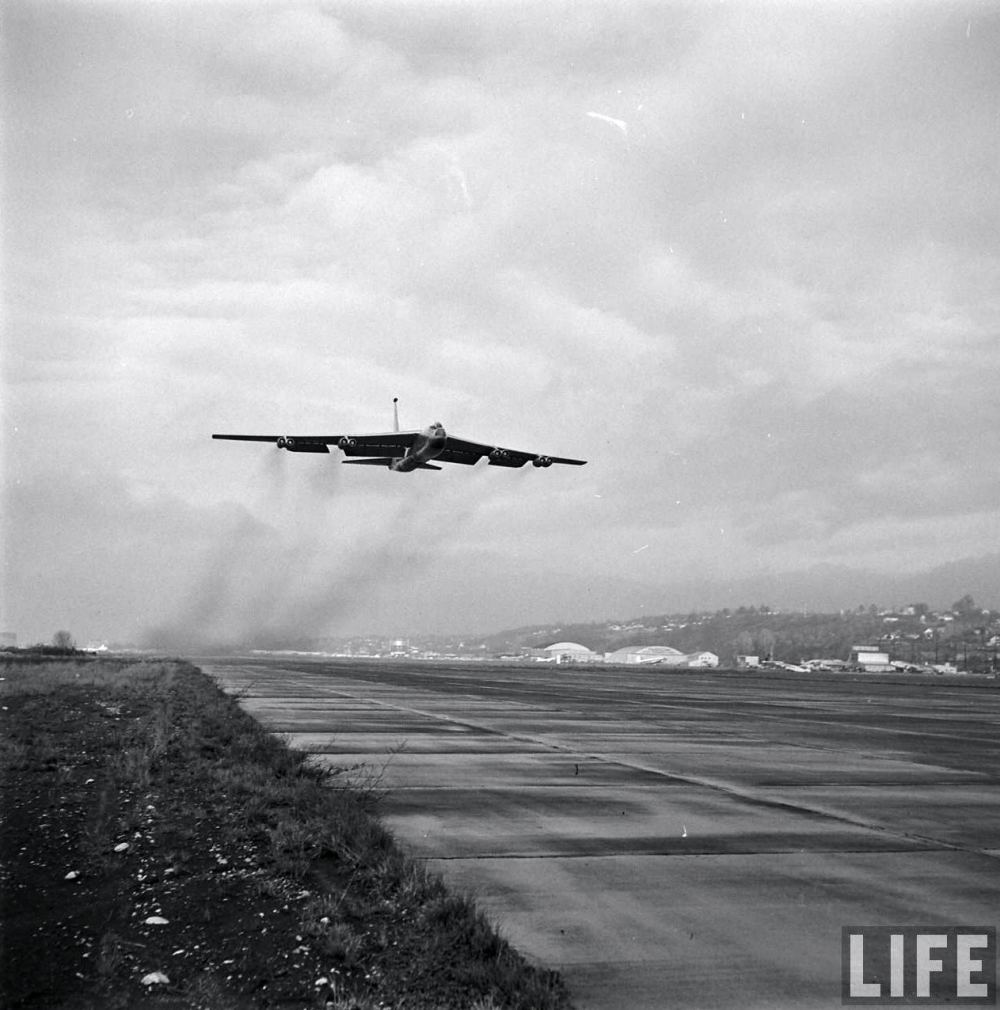
2 October 1952: The Boeing XB-52 Stratofortress prototype, 49-230, made its first flight at Boeing Field, Seattle, Washington, with test pilot Alvin M. “Tex” Johnston in command. Lieutenant Colonel Guy M. Townsend, U.S. Air Force, acted as co-pilot.
The first of two prototype long-range, high-altitude, heavy bombers, the XB-52 had been damaged during ground testing and extensive repairs were required, which delayed its initial flight. The second prototype, YB-52 49-231, made the type’s first flight nearly six months earlier, on 15 April 1952.
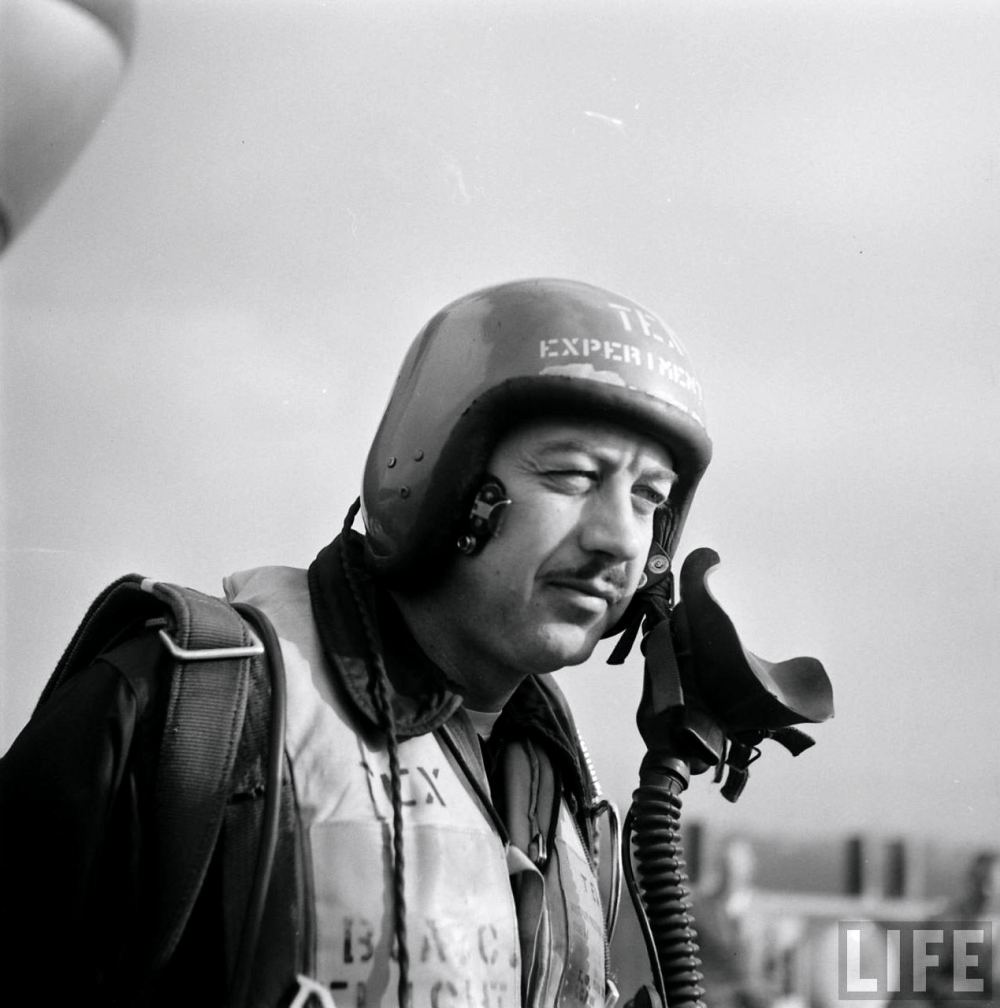
The prototype Stratofortress the largest jet aircraft built up to that time. It was 152.7 feet (46.543 meters) long with a wingspan of 185.0 feet, (56.388 meters) and 48.25 feet (14.707 meters) to the top of the vertical fin. The leading edges of the wings were swept back 36° 54′. The XB-52 had an empty weight of 155,200 pounds (70,398 kilograms) and its maximum takeoff weight was 390,000 pounds (176,901 kilograms). Fuel capacity was 27,417 gallons (103,785 liters).
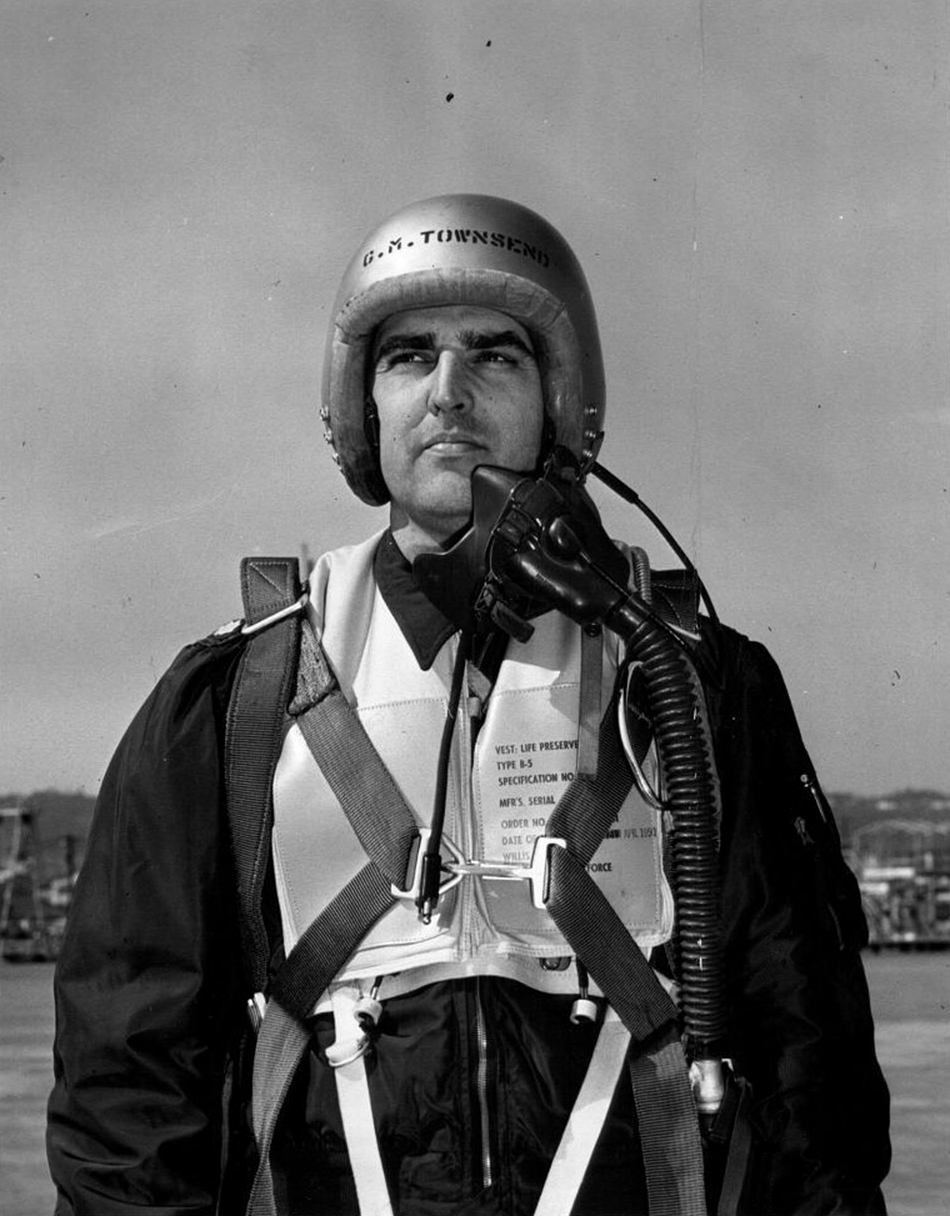
The XB-52 was powered by eight Pratt & Whitney YJ57-P-3 turbojet engines, with a normal power rating of 8,700 pounds static thrust at Sea Level (38.700 kilonewtons). The prototype bomber had a cruising speed of 519 miles per hour (835 kilometers per hour), and a maximum speed of 611 miles per hour (983 kilometers per hour) at 20,000 feet (6,048 meters). The planned bombing altitude was 46,500 feet (14,173 meters) and it had a service ceiling of 52,300 feet (15,941 meters). The XB-52 had an initial rate of climb of 4,550 feet per minute (23.11 meters per second) at Sea Level. Its maximum unrefueled range was 7,015 miles (11,290 kilometers).
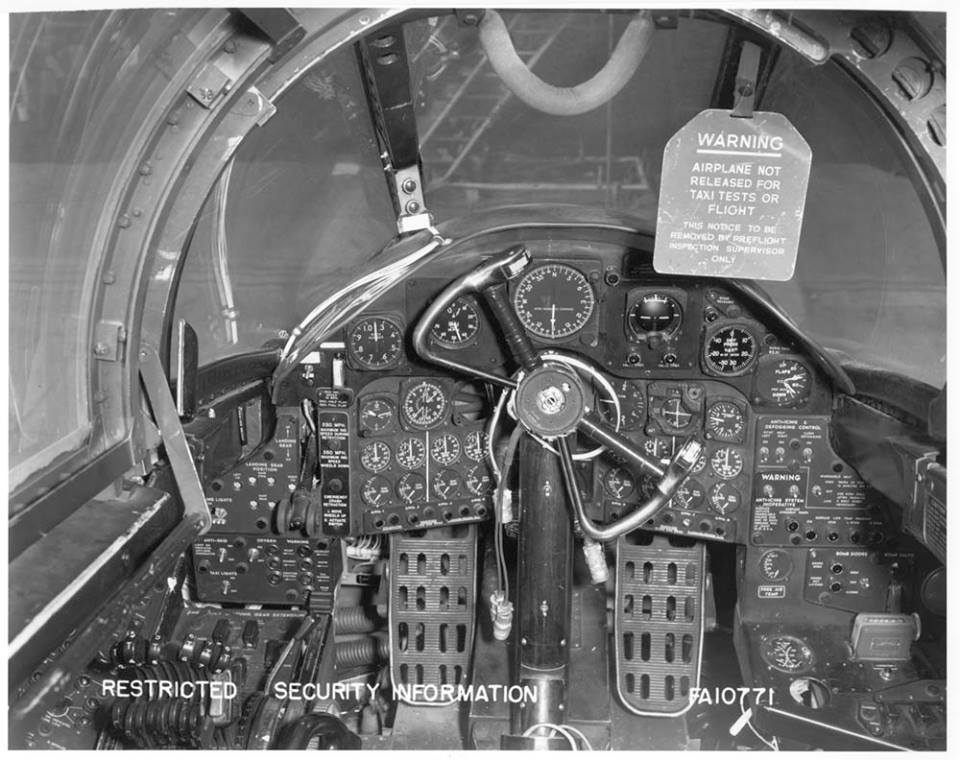
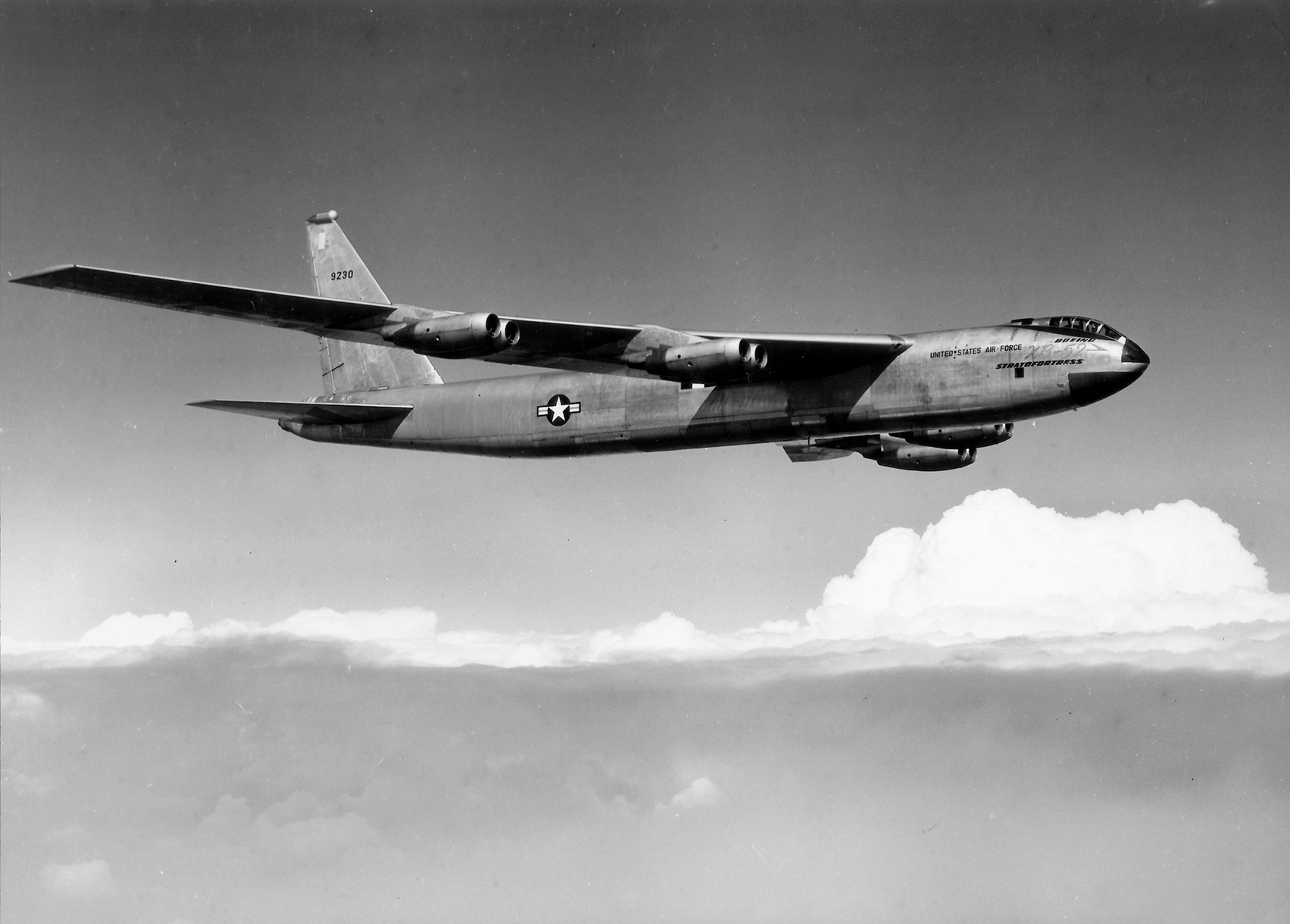
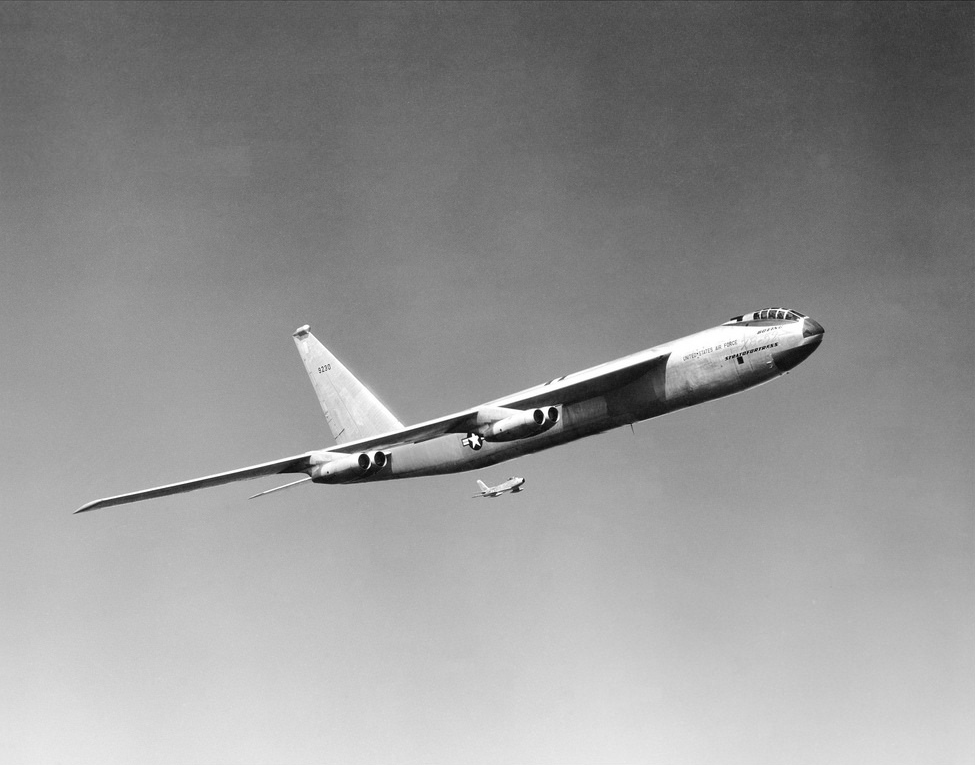
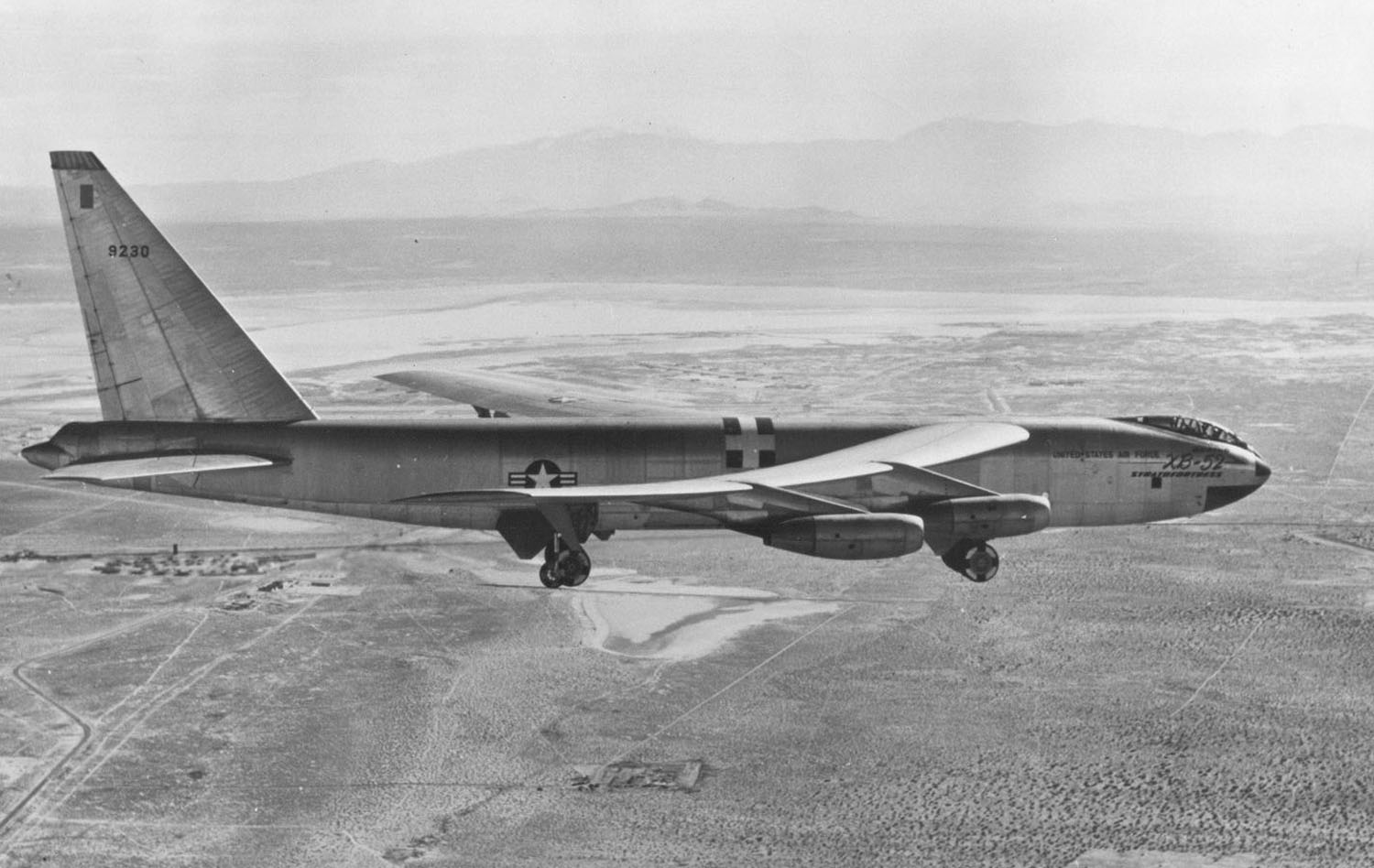
In its original configuration, the XB-52 was armed with two .50-caliber machine guns in a turret in the tail, with 600 rounds of ammunition per gun, though these guns were not installed on 49-230. The XB-52 was designed to carry a single 25,200 pound (11,431 kilogram) T-28E2 Samson bomb, or other conventional or nuclear weapons.
XB-52 49-230 was used in flight testing for its entire service life. The airplane was scrapped in the mid-1960s.
744 B-52 bombers were built by Boeing at Seattle, Washington and Wichita, Kansas, with the final one, B-52H-175-BW 61-0040, rolled out 22 June 1962.
75 B-52H Stratofortresses are still in service with the United States Air Force.
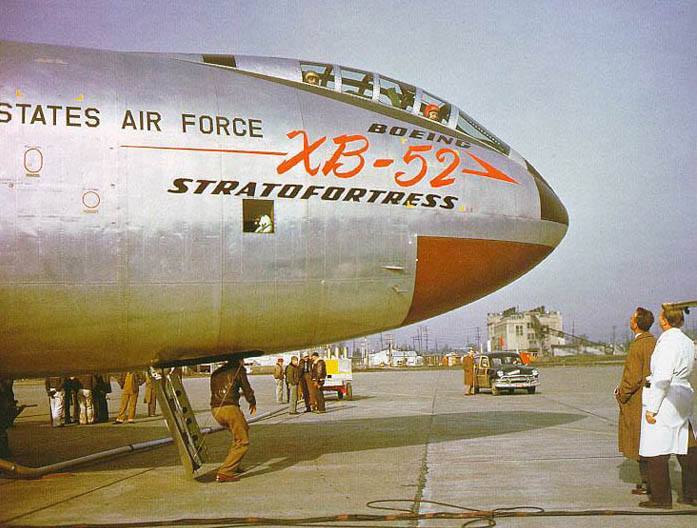
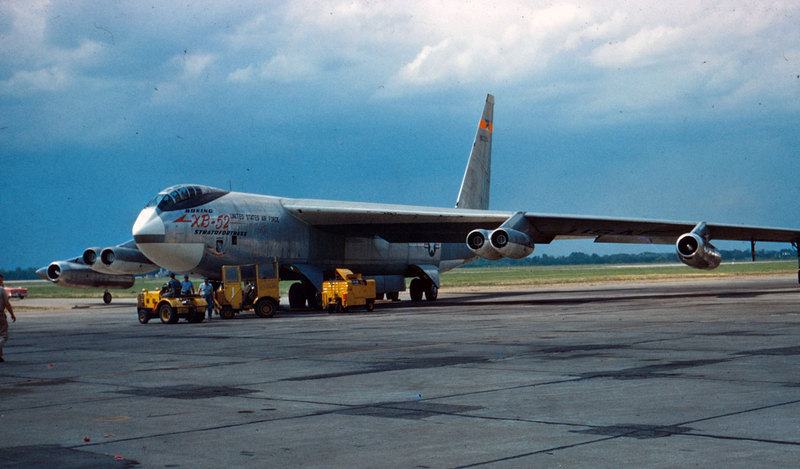
© 2017 Bryan R. Swopes
The last photo shows a six-engined XB-52, that has the outboard twin J-57 pods replaced with single engines that appear to be considerably longer than J-57s.
Any ideas as to the story behind this configuration?
Excellent question, Tom. Both the XB-52 and YB-52 were used for flight testing at Wright-Patterson Air Force Base in the late fifties. About 1959, 49-230 was modified with the installation of Pratt & Whitney J75 turbojet engines in single-engine pods in the outer position. Information on this is scarce. Apparently, there was some consideration of a four-engine B-52 variant (also a turbo-prop variant.) An article in FLIGHT from that time seems to indicate that this modification was intended for endurance and reliability testing of the J75 engine, itself, though, with approximately 1,000 hours being flown.
I was there at the maiden flight of the B-52. Spent the night at a sleepover with Tex Johnson’s son the night before. I was 9 yrs old.
As I remember, the three engine plane photos are of a B-47, which narrowly preceded the B-52, and they had already the X from XB-47 as it had been authorized for flight.
That must have been fun, Mike. The Boeing XB-47 first flew on 17 December 1947, nearly five years earlier than the XB-52. Tex Johnston was brought in by Boeing (he had been at Bell Aircraft Corporation) to complete the test flight program of the XB-47.
It was fun, Bryan. Story was that, when Tex first flew the XB-47, he taxied it back into Boeing Field’s hanger under power and turned it 180° and blew the back wall of the hanger out. He had a reputation of being a maverick!
2 corrections to my previous post:
I mean’t 3 engines per wing – 6 engines per plane for the B-47.
Insert “removed” before the “X” in XB-47.
I have probably said this before, but it is worth repeating. I love your website Bryan, and I enjoy catching the links on FB. Many Thanks!
Thanks, Ed. That means a lot! —Bryan
I suppose Johnson was told not to barrel roll any more Boeing products?
I think that was a standing order, but obviously they said nothing to the test team about nearly vertical takeoffs! 🙂
I moved to Fort Valley GA in 1954, very close to Warner-Robins AFB, SAC base. Now just Robins AFB. The B-47s and B-52s were a constant over our town, refueling practice and whatnot. Also–F-80s, F-86s, & F-94s.
As a kid growing up in the 50s, it seemed like there was a new aircraft roll out every month. (it was hard to keep up with all the Revell models) Here’s an aircraft that will last in to the 2050s according to news articles. A real tribute to excellent engineering and top notch maintenance.
B-52 wasn’t operational yet in ‘54. Didn’t start regular flights until ‘55 out of Castle near Merced CA.
This is in reply to the comment above from “Mo” about living close to WRAFB. I grew up in Macon, in the Ingleside area. In the late 60s Vietnam era, B-52s in camo fairly often came over my neighborhood, very low, very loud and very impressively. I was both fascinated and terrified. I was told at some point, quite later, that WR was a maintenance/repair center for B-52s engaged in Vietnam, and that my house must have been right under the landing approach path for these beautiful monsters. I never got a definitive explanation for these big jets coming over do low…I don’t recall seeing other types coming in that low and that close, if memory serves correctly. I’m not complaining here. I loved seeing them. Whenever I heard one coming I’d rush out of the house and wait in timorous expectation for the defeaning, mesermizing spectacle to ensue. If anyone here can offer any insight or first hand report as to why these big jets would come lon so low, I’d love to learn more about it. Maybe it’s just that they needed a really long approach path, or maybe other logistical or sir control considerations pertained. I’ve always wondered. Thanks!
Awesome aircraft! We got our money’s worth out of the B-52! When did the cockpit evolve into the current side-by-side configuration?
The XB-15 and YB-52 had the tandem cockpit. The B-52A had the side-by-side cockpit.
Hi Richard. I’m not sure of this, but I have read that Gen Curtis LeMay did not endorse the tandem cockpit idea that was used on the B-47 and X and Y B-52s. As commander of SAC, he got what he wanted…conventional side by side seating for the pilots. As a former B-52 pilot myself, I can attest to the wisdom of his decision.
The last photo would appear to be a B-47. Must have done some copycat work.
No. It is the XB-52. The B-47 is smaller and much more graceful.
As a Cub Scout in about 1954, we were given a tour of the B-52 hanger and a walk around and under the then new B-52. I remember they wouldn’t let us walk close enough to the access hatch under the nose to see in. It was “Top Secret”. Even to a bunch of 9 year olds. I was really impressed with the 4 machine guns in the tail. My memory is we saw the guns pivoting around but that may be a kids fantasy.
Garrett, it may not be a fantasy. I don’t know much about the gunner station, but I do know there is some kind of setting that if not turned off, remains on when the aircraft is on the ground.
I remember one time circa 1985 walking behind a B-52 (I was assigned to them) and the tail gun tracked us, moving around as we did.
So yeah, it could very well have happened. Maybe a gunner can come on and explain.
My father was a tailgunner on the B52 back then. Lots of stories of the guns tracking the security police as they patrolled the aircraft on the alert ramp…lol
On the B-52 Cub Scout trip, we also saw a B-47 landing, drag chute out, then abort and do a go around. Drag chute deployed. I was concerned, amazed, they could fly that way.
Later, while in college, I worked several years in Flight Test Engineering/Mfg. I was one of about a hundred employees standing on the north end of the Field for landing of the first 747 flight from Everett to Boeing Field.
Garret,
Actually, on the 47, there was an approach chute and a brake chute. Woe be to the pilot that referred to either as a “drag” chute. There is a story behind that terminology.
As I understand it, the approach ‘chute provided drag so the engines’ r.p.m. could be kept up in case of a Go Around???
That’s correct. The old jet engines took a long time to “spool up”. I did not fly the B-47, but I also imagine it was a very slick jet and needed low power setting on final approach absent the extra drag provided by the approach chute. Low power settings means longer time to get back to thrust settings needed for a go-around if needed. The iconic jet trainer, T-37, used a similar technique to allow for higher thrust settings on final due to its very slow engine spool up time…on landing final approach, it was flow with its large speed brake deployed. In the event of a go around/missed approach, the pilot immediately retracted it.